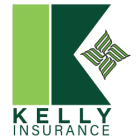UNDERSTANDING LIABILITY LIMITS
Insurance in the business world is filled with a myriad of terminologies that are crucial for policyholders to understand. Among these are the terms related to liability limits found on certificates of insurance, such as “Aggregate Limits”, “General Aggregate”, and “Products Completed Operations Aggregate”. Understanding these terms is essential for ensuring that your business has adequate coverage.
BEING REQUIRED TO CARRY $5,000,000 PER OCCURENCE?
The intricacies of business contracts often brings to light the essential requirement of specific insurance limits. Certificates of Insurance (ACORD forms) play a crucial role in this landscape, acting as a tangible proof of a business’s adherence to the stipulated insurance mandates within contractual agreements. Contracts frequently delineate precise liability limits, such as $10mm liability umbrella or $5,000,000 per occurrence, cementing the foundation of financial safeguards against potential contractual risks and liabilities. The ACORD form meticulously documents these required limits, ensuring a seamless verification process that underscores the business’s commitment to compliance and risk management. Such documented assurance amplifies a business’s professional stature, bolstering its reliability and trustworthiness in various partnerships and business engagements. Contact us today or text (412) 212-8577 for more information.
UNDERSTANDING AGGREGATE LIMITS of INSURANCE
An “aggregate limit” is a cap, a maximum amount an insurance policy will pay out during a policy term. In insurance, the term ‘aggregate’ refers to the total sum of coverage available to a policyholder for all claims made.
General aggregate” is a key term found in liability policies. It represents the maximum amount that a policy will pay for all covered losses, excluding some specific perils such as employee injuries or automobile accidents. The general aggregate limit is a pivotal aspect, setting the boundaries of your coverage.
“Products completed operations aggregate” is another crucial term to understand. It represents a sub-limit within the policy that is dedicated solely to the products-completed operations hazard. This covers liabilities arising due to products sold or services completed.
The “annual aggregate” refers to the total amount that the insurance company will pay for claims during a single policy year. It resets at the renewal of each policy term, providing a fresh start for the coverage limit.
Understanding these aggregate limits and their meanings helps in evaluating the coverage’s comprehensiveness. Each term, like “general liability aggregate”, “products & completed operations aggregate”, and “annual aggregate deductible”, plays a specific role in defining the boundaries of your insurance protection.
To illustrate, if your policy has a general aggregate limit of $1 million, once your claims have reached this amount, there won’t be coverage for additional losses. Similarly, a products completed operations aggregate limit sets a maximum payout for claims related to products sold or work completed.
Incorporating a $2m aggregate limit in your liability policy ensures a significant cumulation of coverage over a policy term. It represents the aggregate of payouts available for multiple claims, ensuring that your business has the necessary financial backup to navigate through various liability challenges seamlessly.
A $10,000,000 per occurrence limit is a premium choice for businesses seeking extensive coverage for significant liabilities. This level signifies the insurer’s maximum payout for a single claim, ensuring that your business is fortified against large-scale liability claims. Such a substantial limit is crucial for businesses looking to ensure comprehensive protection and financial stability in a dynamic business landscape.
Opting for a $10mm liability umbrella is a strategic move towards robust business risk management. An umbrella policy of this magnitude enhances your primary liability coverages, like $2,000,000 aggregate limits or $5,000,000 per occurrence limits, by providing additional coverage that ensures the continuity and financial integrity of your business in the face of multi-million-dollar claims.
Contractual Requirements and Certificates of Insurance (ACORD Forms)
In the realm of business contracts and agreements, it’s not uncommon to encounter specified insurance requirements that a business must fulfill. These mandates often stipulate various liability limits, such as a $5,000,000 Umbrella Liability or a $10,000,000 per occurrence limit, to ensure adequate financial protection against potential risks and liabilities associated with the contract’s obligations.
These specified limits are commonly documented and verified through a Certificate of Insurance (ACORD form). This certificate acts as a verification tool, providing confirmation that the business holds the requisite insurance coverages and limits as per the contract’s stipulations. For example, if a contract requires a $10mm liability umbrella, this would be distinctly listed in the ACORD form, confirming the presence and validity of such coverage.
Ensuring that your insurance coverages align with contractual requirements is paramount, as it not only fosters compliance but also enhances the credibility and reliability of your business in professional engagements and partnerships.


